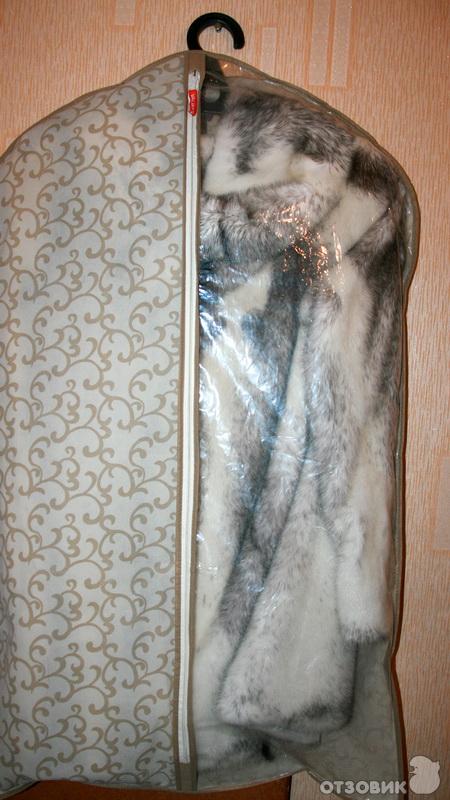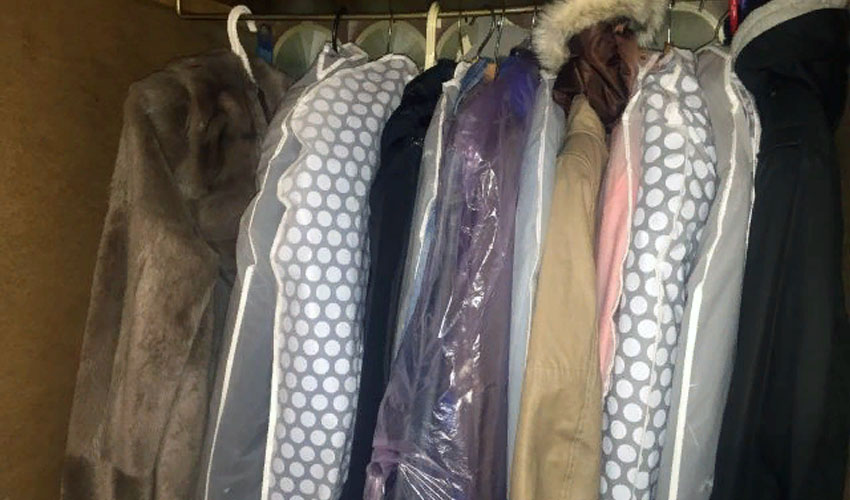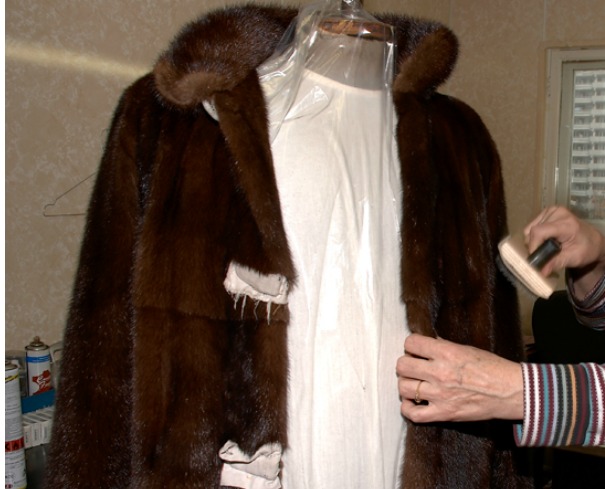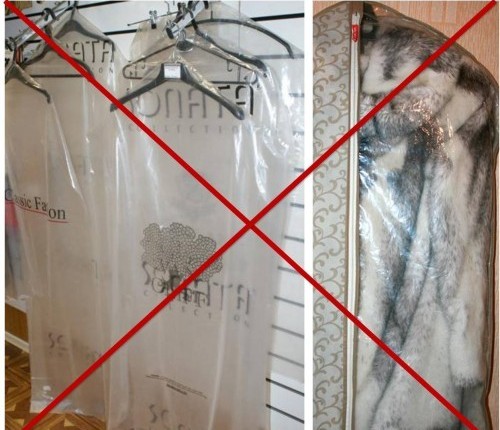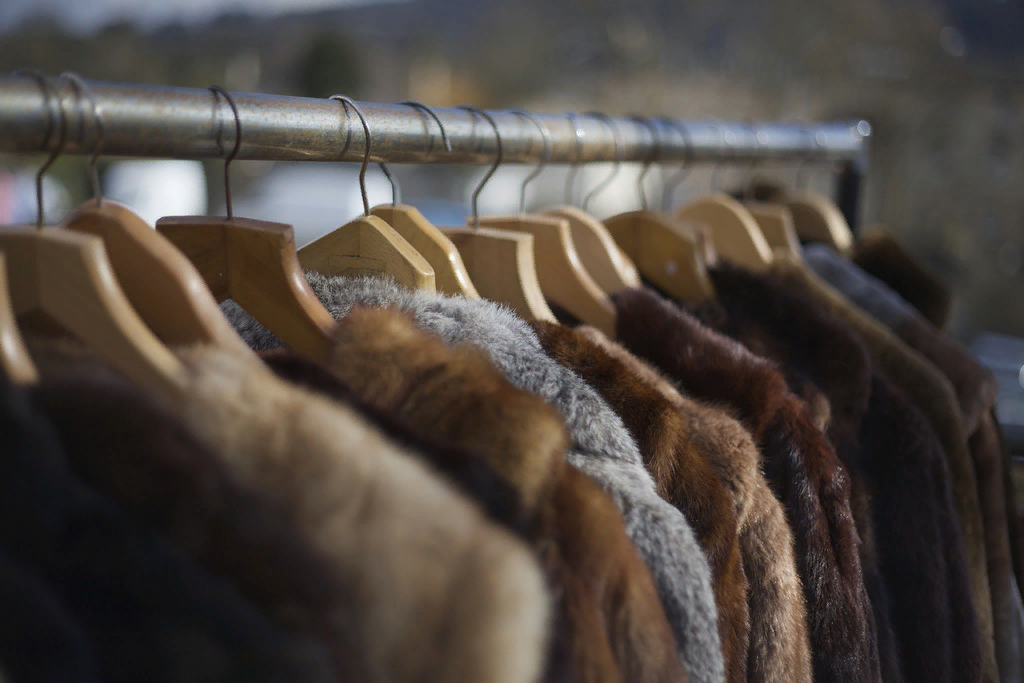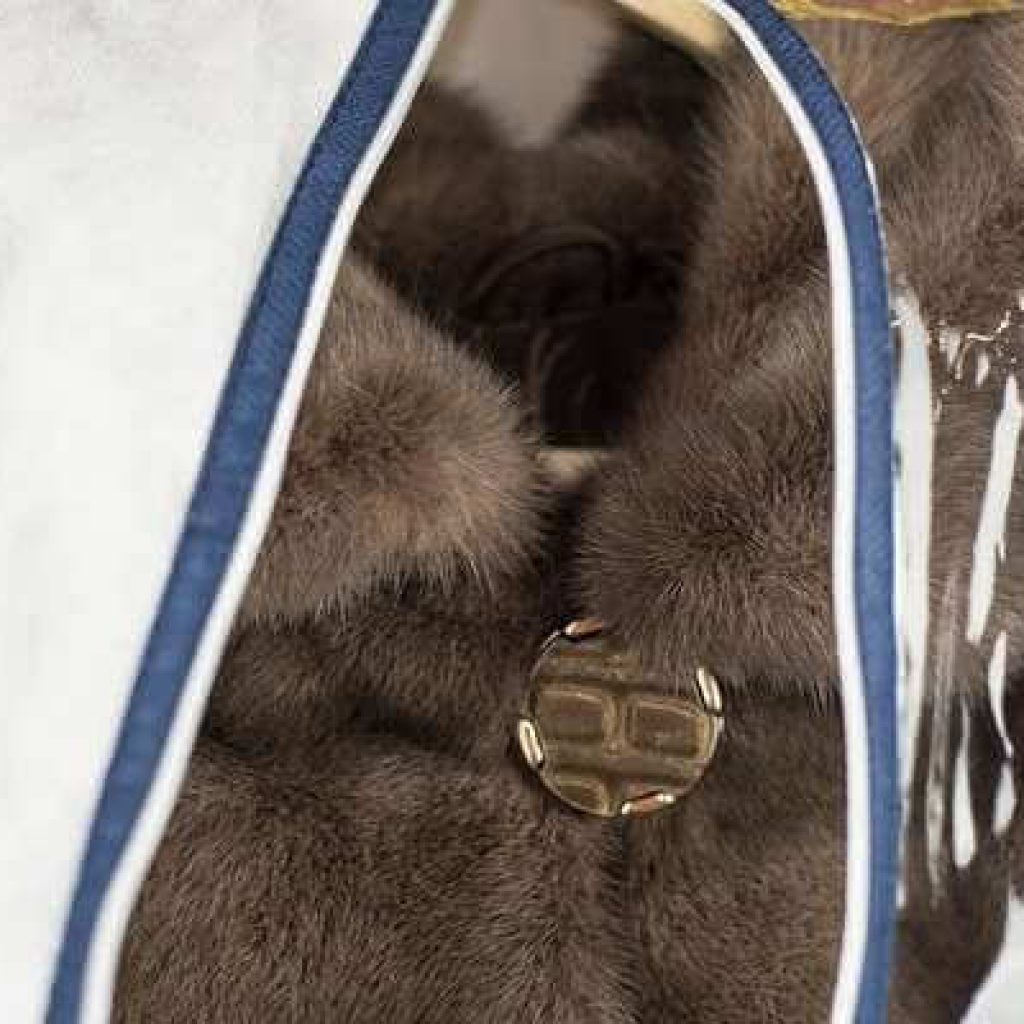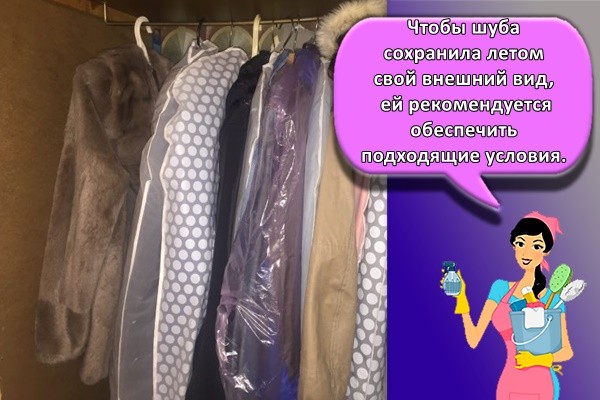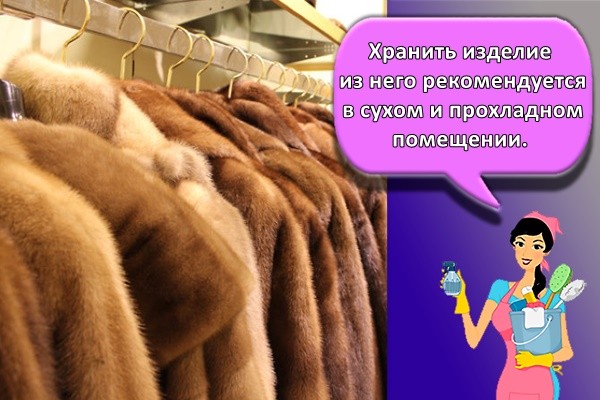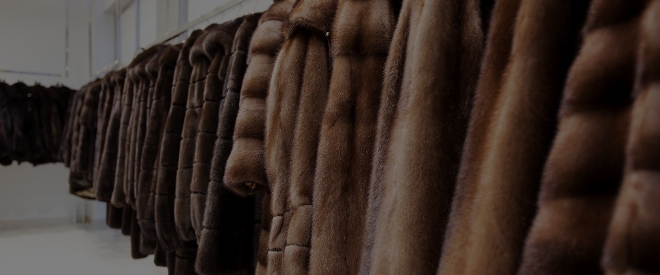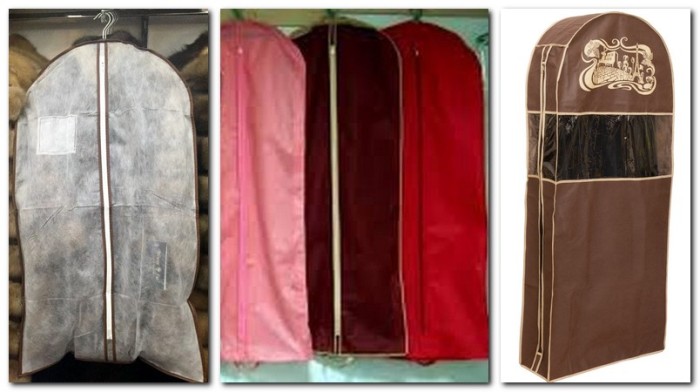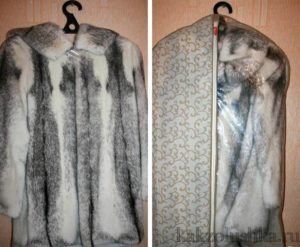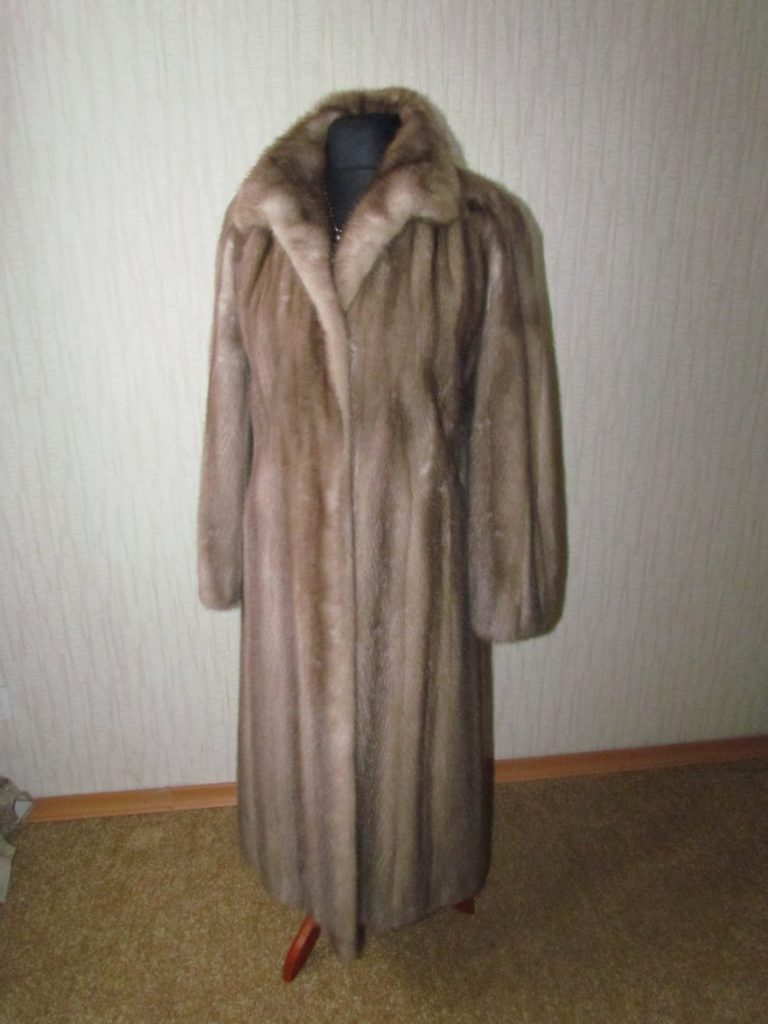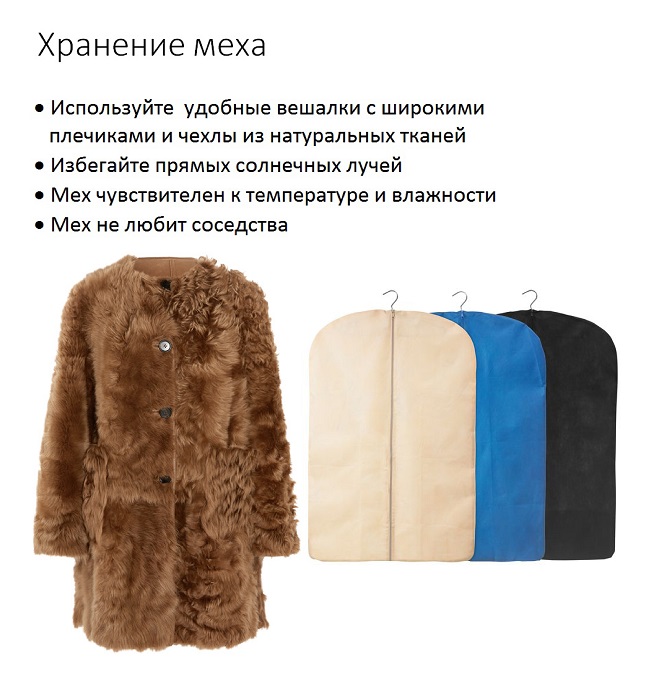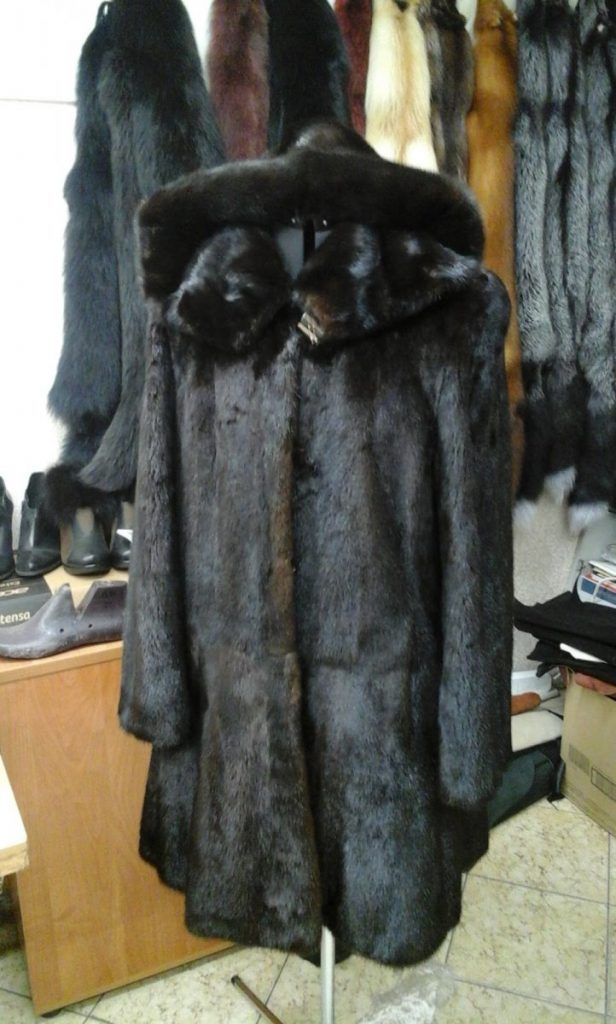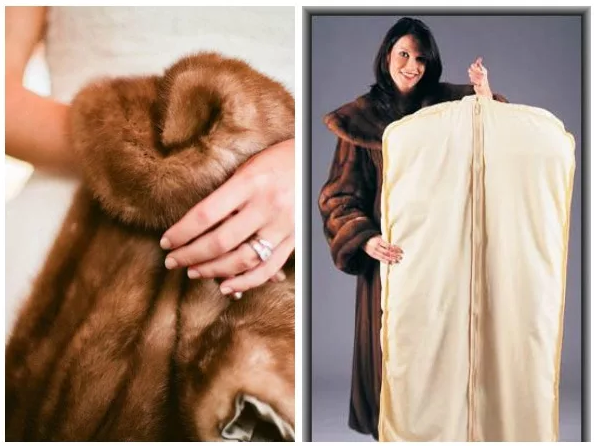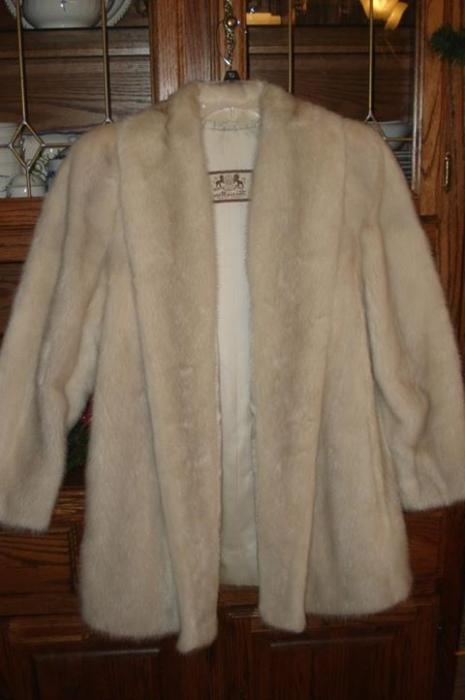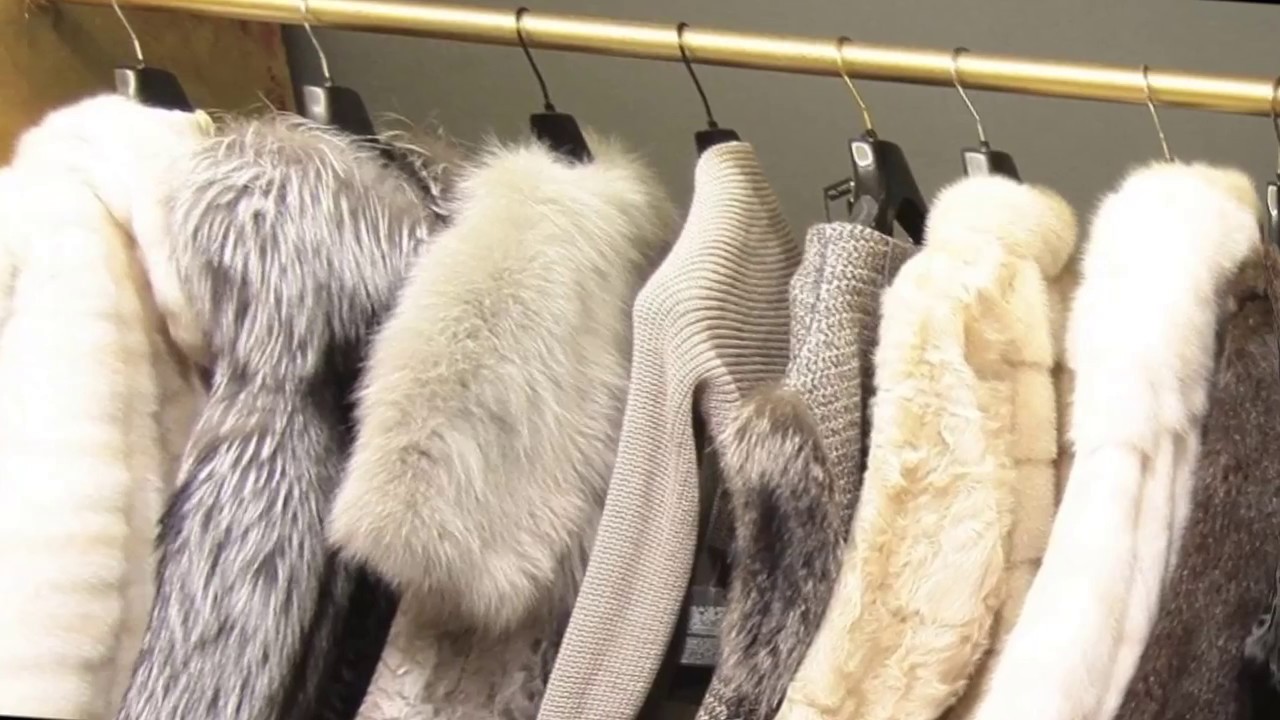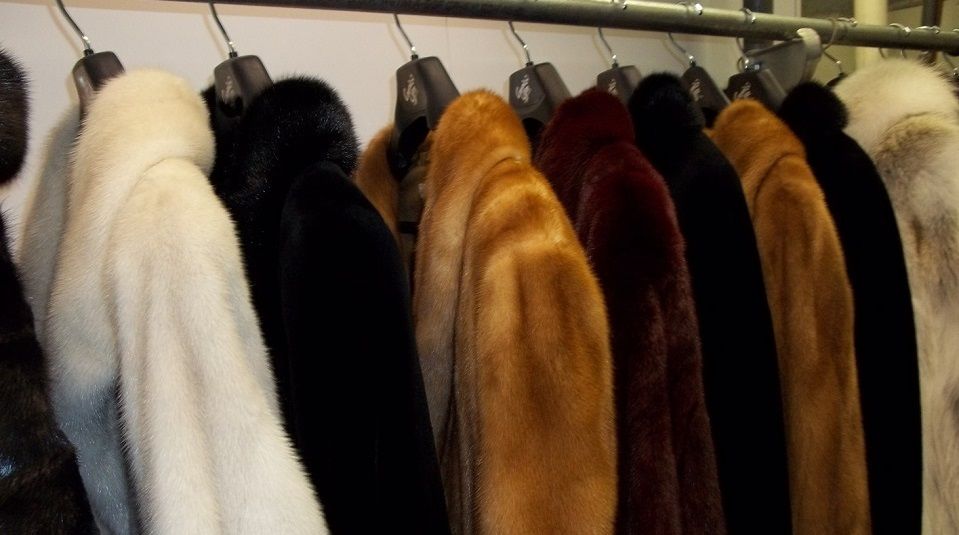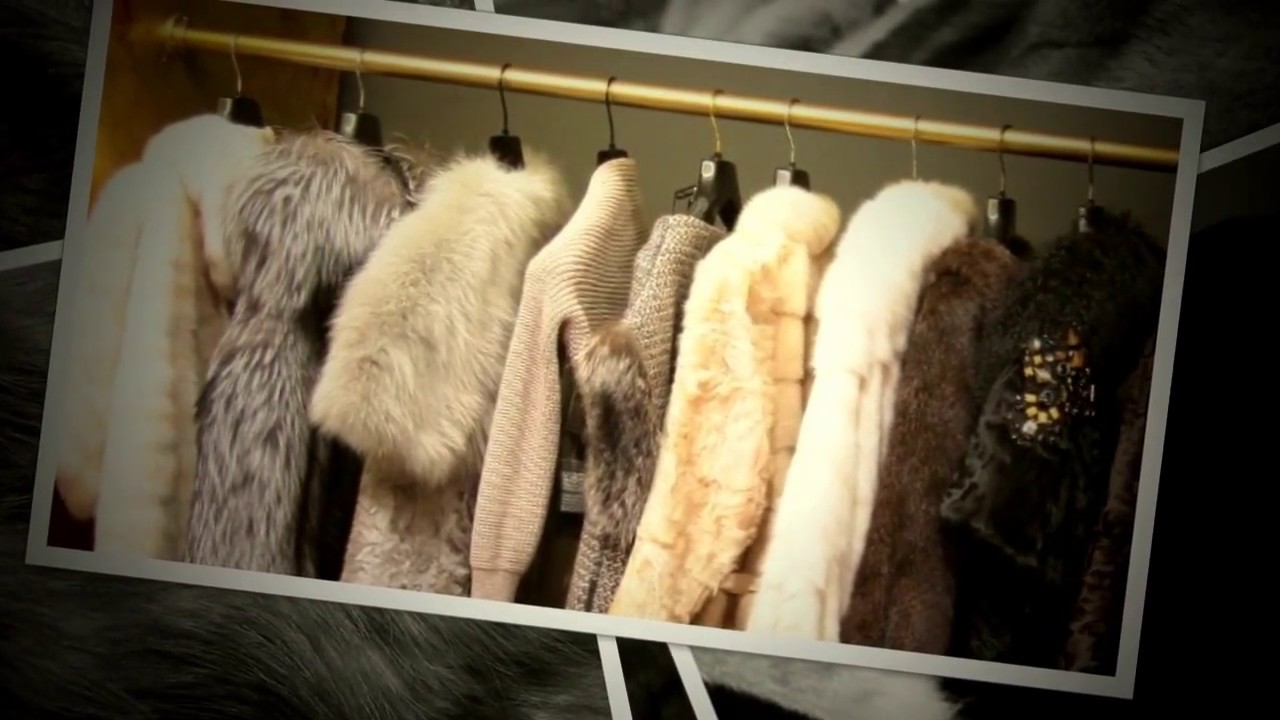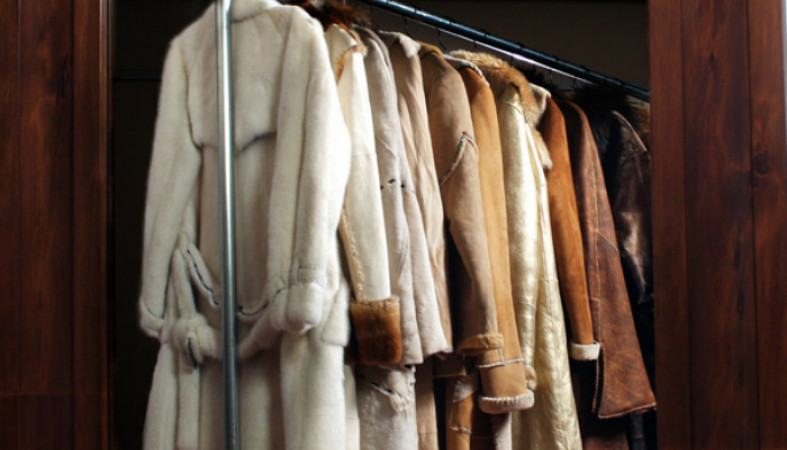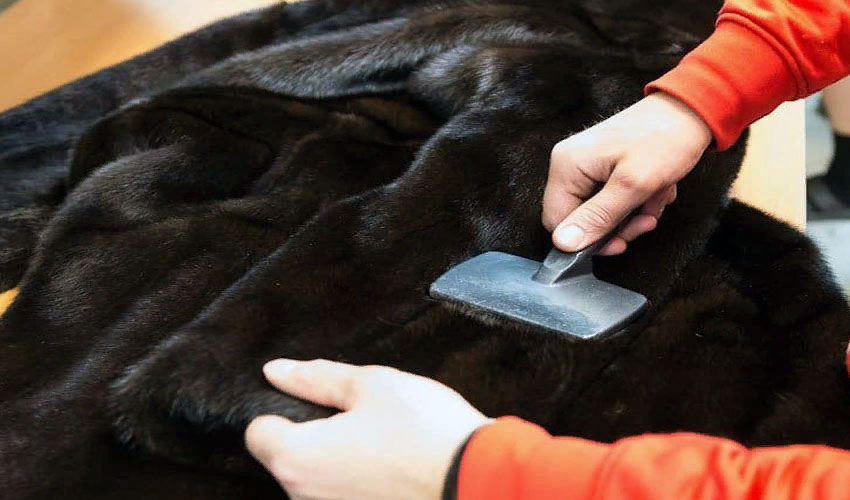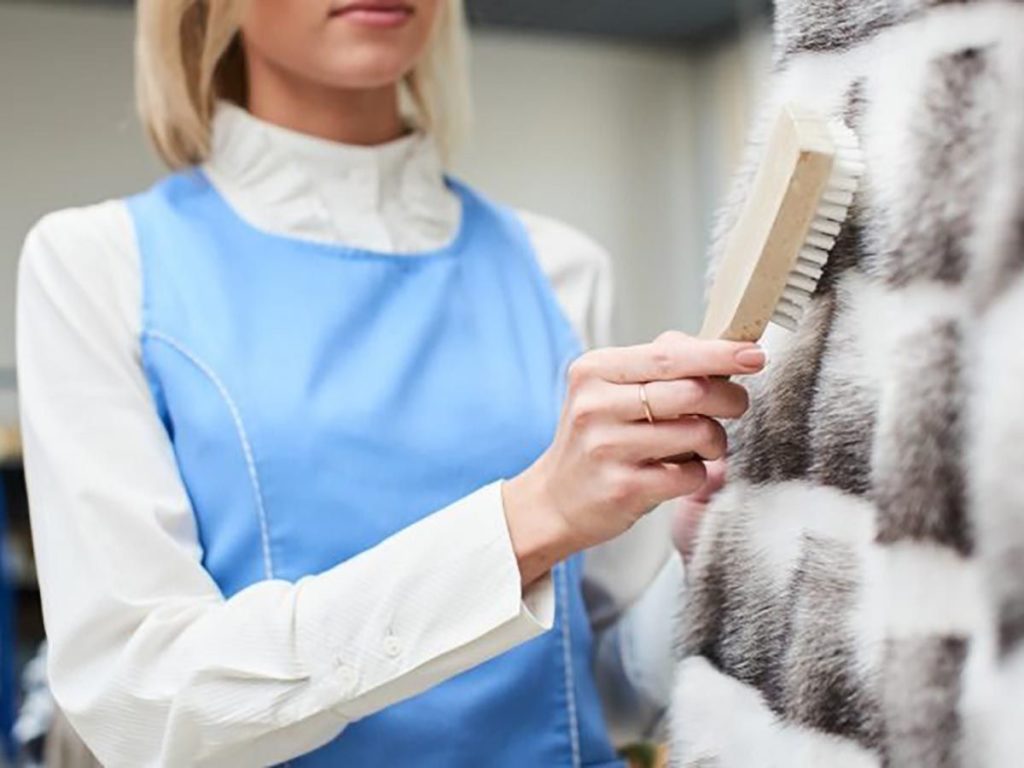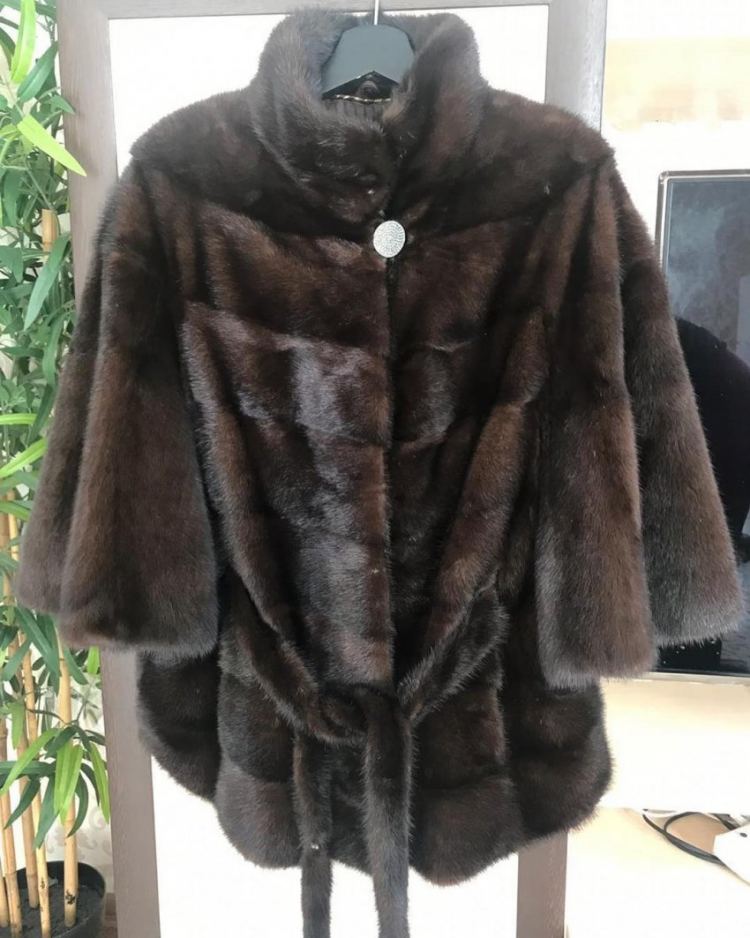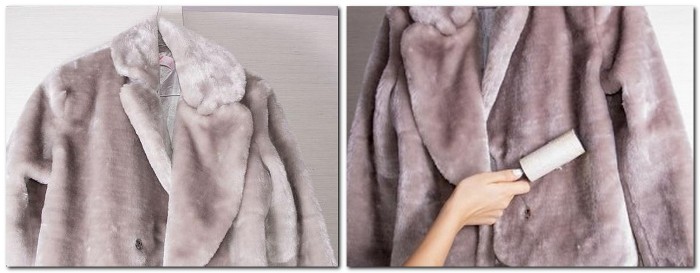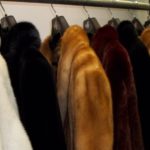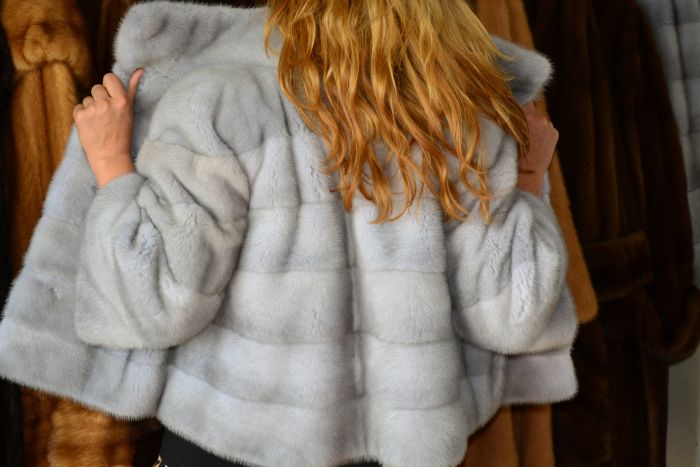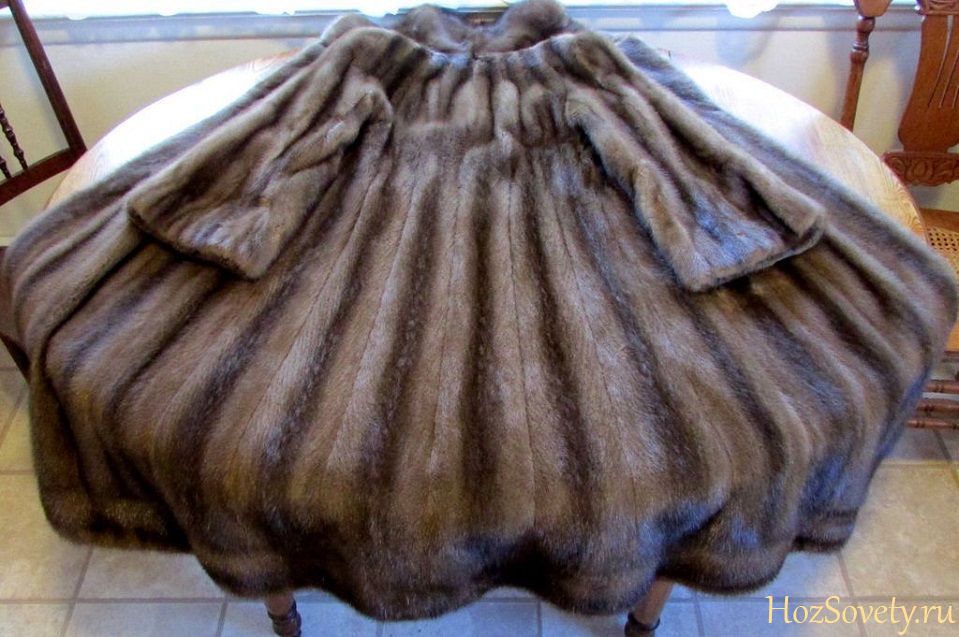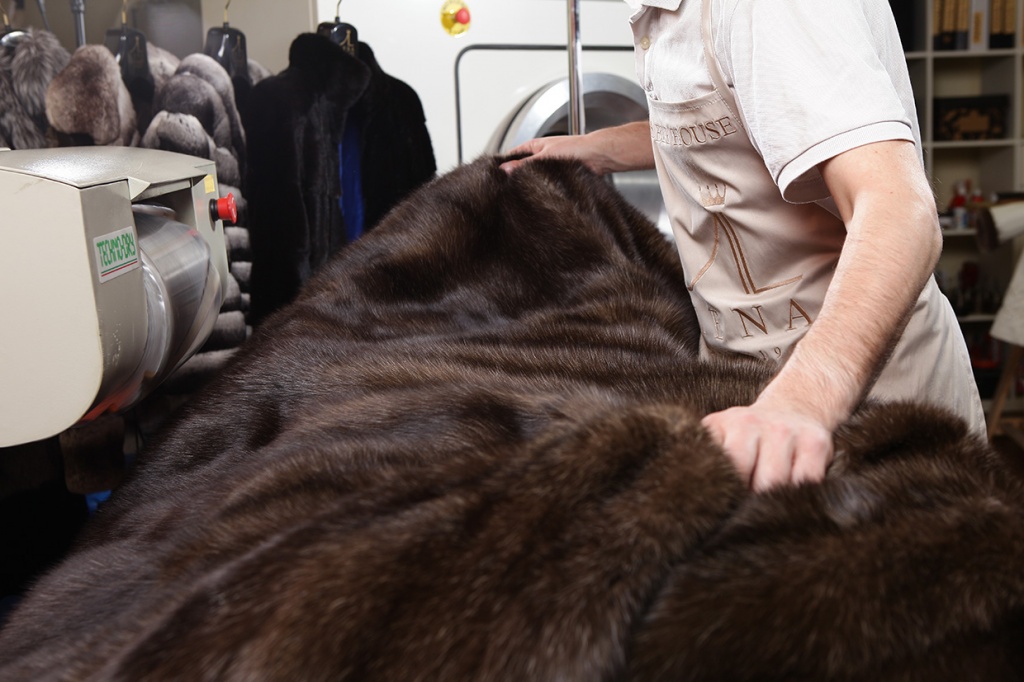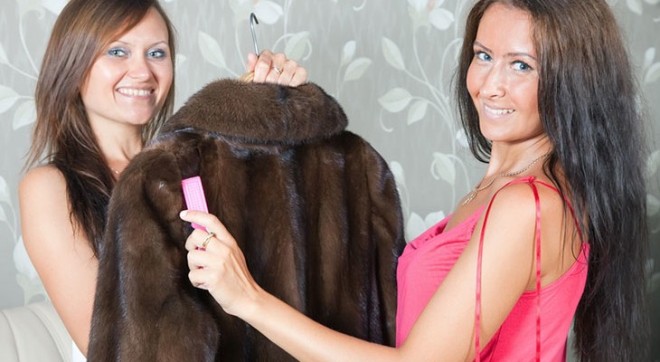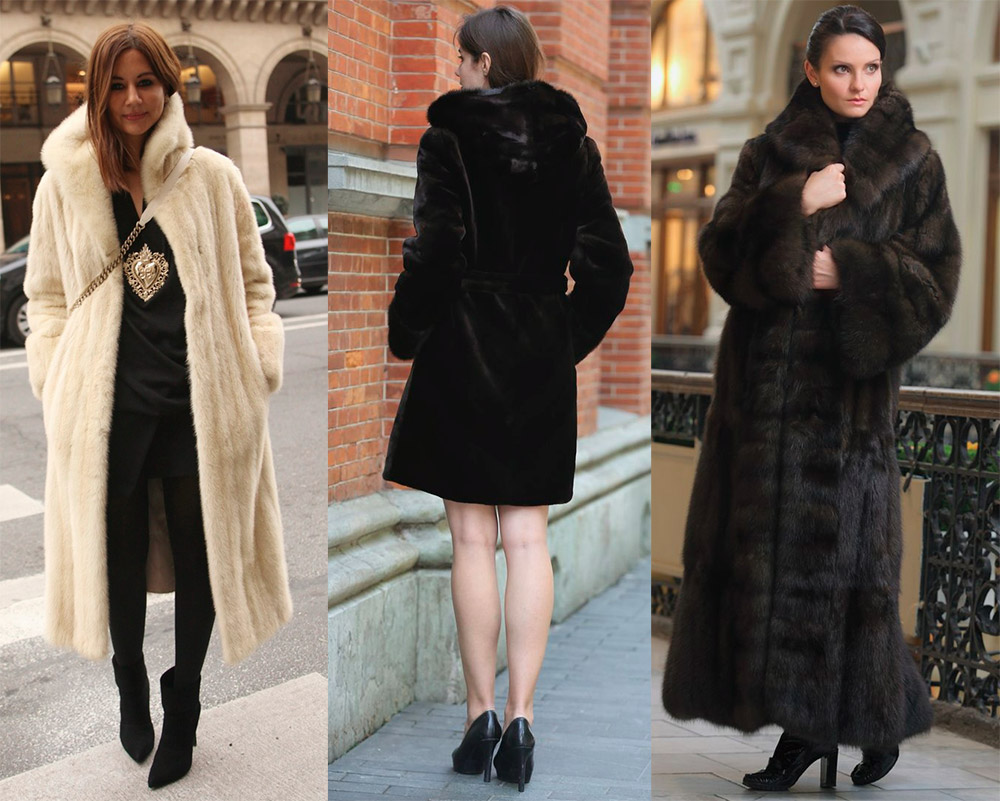Can I store my fur coat in the freezer?
Mink fur can deteriorate from increased dryness and exposure to sunlight. In addition, it is forbidden to keep a fur coat next to other things. It should be borne in mind that a white fur coat can turn yellow under the influence of unfavorable factors.
To preserve the product, it is better to use a special freezer. Such storage protects the fur coat from sun exposure, dampness, moths, high temperatures. Of course, you can simply put your fur coat in the freezer. However, it is much better to use a specialized refrigerator. In such places, special care is provided for fur coats.
The product is handed over for summer time, and when winter comes, it is taken away. The fur in such a freezer breathes, because air is supplied to it, which blows the product. For preventive purposes, the temperature regime is lowered several times a month. This avoids the appearance of moth larvae.
In special storage rooms, you can create ideal conditions for fur
Storing a mink coat in summer
The ideal option to keep a mink coat intact is to store it in a special refrigerator during the warm season. It maintains an optimal temperature for the product of 0-10 degrees and an air humidity of about 50%. If there are several fur coats in the wardrobe, then it is advisable to buy such a wardrobe for the house. But if this is not possible, then you need to know how to properly store a fur coat in an ordinary wardrobe.
General rules
The main thing for a mink is darkness, coolness, space. The thing should hang on wide shoulders. All accessories and jewelry must be removed from it. From time to time, the cabinet needs to be opened and ventilated.
On a note! Do not have naphthalene, chemicals and their derivatives in the cabinet. This will significantly affect the quality of the fur. Mink also does not tolerate cedar well; you cannot store a fur coat in a cabinet made of this tree.
Space
A fur coat needs a lot of space. The fur should not be squeezed. Nothing should constrain the product. Once every 2 months, the fur coat must be taken out for airing.
Case
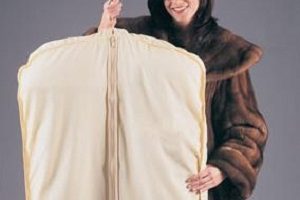
Do not use plastic covers for storing fur coats. The thing in them will simply suffocate and lose its attractiveness. Suitable option - breathable cotton or linen cover
You need to pay attention that the cover does not paint the fur
Protection from moths
Since mink is a good treat for moths, if you do not protect yourself from these pests, the fur coat may not survive until next season. In stores, you can buy many substances that repel any insects. It is better not to use aerosols, they can ruin the fur. For protection against moths, special sachets with the smell of lavender and geranium can be placed in the pockets of the product and on the shelves of the cabinet. You can make your own pouches filled with dry lemon zest, dry geraniums, or lavender.
Prevention of the appearance of moths
No cover will be able to protect fur from moths with a 100% guarantee. Therefore, it will have to be treated with special means. Spray insecticides are widely available commercially. On the packaging of such a product there is an instruction for use, which indicates the frequency of processing. But on average, the cover will have to be renewed once every three months.
The question of how to keep a fur coat from moths interests many owners of expensive things. You can find all kinds of recommendations on various forums. Someone advises putting cedar bark in your pockets, the smell of which does not fade away and moths really do not like it. There is also an opinion that the best way to combat this scourge is dried geranium leaves, citrus peels or lavender.
But home remedies for the control of voracious insects are inferior in terms of efficiency to high-quality aerosols.
The use of naphthalene during storage is undesirable.Fur absorbs odors very well, as a result of which it will be uncomfortable to wear such a thing. In addition, naphthalene is a carcinogen that has long been banned for use in many European countries.
In case the moth still got to the fur coat, it will be noticeable right away. The pile will become sloppy, bald spots will form in it. When you shake things, pieces of wool will be separated from it, which the moth managed to damage. And the larvae of this pest will be present in the folds.
If the presence of a moth in a fur coat has become obvious, you should not hesitate, you need to act urgently.
The first step is to use a powerful insecticide. If everything is done in accordance with the instructions of the drug, within the next hour or two you can cope with the moth and prevent the insects from completely destroying the coat.
In the presence of moths, the fur is treated with an aerosol, put into a cover and left there for several days. If the cover does not close completely, the item is placed in a tight polyethylene bag and treated with the drug every day so that its effect does not weaken.

Rules for storing a mink coat in summer
When storing a mink fur coat at home in standby mode for winter walks, it should be protected from:
- moths;
- direct sunlight;
- warm air;
- excessive dryness or moisture;
- dust and other contaminants;
- tight spaces where the fur is compressed, crushed and deteriorated.
The following summer storage conditions will be comfortable for natural fur:
Space, darkness, coolness. A mink coat is a luxurious thing, allocate enough space for it in a closed closet, where the sun's rays do not penetrate, and in no case hang it close to other clothes so that the fur does not dry off and does not break. Any heating devices - at a distance of at least 1 meter from the cabinet, room humidity - 40-60%.
The absence of any accessories and jewelry - handbags, jewelry that damage the surface of the cloak.
Comfortable, soft and rather wide coat hangers on which the fur coat is hung. Above - a cover made of breathable fabric, linen or cotton, best of all branded, attached to the product. In the "storage" made of polyethylene, the fur coat will suffocate.
For protection from moths - tablets, either impregnated with a special composition or filled with citrus peels, tobacco, dried lavender or geraniums, rag bags in the pockets of the fur coat and in the corners of the cabinet. They need to be changed every 3-4 months.
Attention: do not use mothballs! Aerosols are contraindicated for furs - they leave stains and spoil the pile. Do not use perfume - when stored for a long time in a closed space, the fragrance changes and can become very harsh and unpleasant.
No "chemicals" nearby: you can not store cleaners or detergents, varnishes, paints or solvents near the fur coat, which irreversibly damage the pile when it gets on it.
Periodic, once every 1-2 months, inspection and ventilation.
Important! Pay attention to the quality of the cover - it should be made of natural fibers and not dyed. The color of the material is dark, and for light furs it is blue. It is also advisable to impregnate the case with a protective agent against moths.
It is also advisable to impregnate the case with a protective agent against moths.
How to wear a mink coat correctly
 Mink fur is a very demanding material that can quickly lose its natural shine if not properly cared for. The best weather for a mink coat is a dry day with a little frost. It is necessary to avoid moisture that spoils the composition of fur and leather.
Mink fur is a very demanding material that can quickly lose its natural shine if not properly cared for. The best weather for a mink coat is a dry day with a little frost. It is necessary to avoid moisture that spoils the composition of fur and leather.
If the fur coat is soaked in rain or snow, you need to shake off the moisture as soon as you enter the room. To properly dry clothes, a number of conditions must be met:
- Hang it on large hangers that fit.
- Dry the fur coat away from heating and heating appliances, in a place where the sun's rays do not penetrate.
- Do not heat the product with any household appliance, otherwise it may dry out and become very brittle due to skin damage.
- If the coat is completely soaked, then before drying it, it is necessary to blot it along its entire length with a cotton cloth.
Do not move or crease the fur product during drying. Failure to comply with this recommendation may result in damage to the coat.
Not a fur coat, but a gourmet! How to protect from moths?
Eating a delicate fur coat is a cute thing for the moth family. Her children are especially gluttonous. The worst thing is that the fur, battered by moths, can no longer be restored. The fur coat will need either an expensive restoration, or a complete replacement, which will hit your pocket even harder.
Of course, it's good when there is no moth at home, in principle, but this gnat starts up imperceptibly, and eats very quickly, so it is better to take appropriate preventive measures in advance and protect your favorite things from the irrepressible appetite of the larvae of these ordinary-looking gray butterflies.
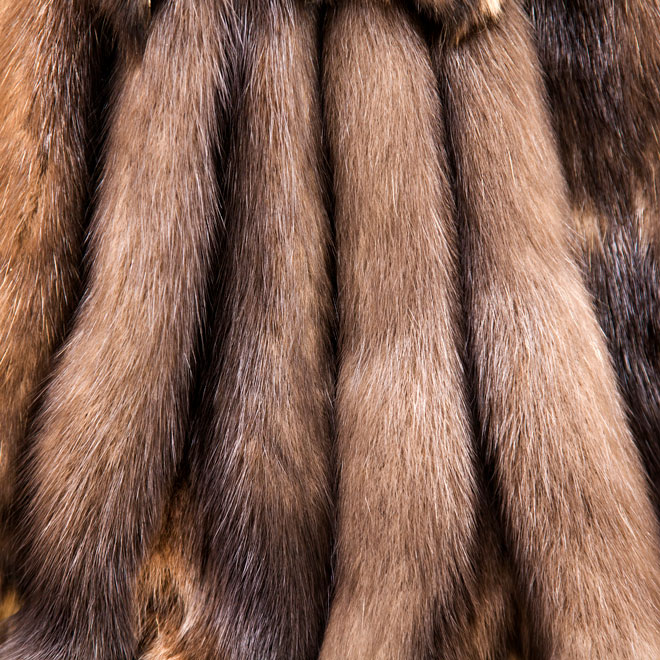 Sable fur does not like ultraviolet light, moisture and mustiness
Sable fur does not like ultraviolet light, moisture and mustiness
Almost no one has been using naphthalene for a long time: not only does its unpleasant smell last for a long time, but it is also harmful to health. There is no need to spoil the fur coat like that. Pest aerosols are a good solution if you spray them only on the cover. It will be useful to treat the entire cabinet with such a spray, having previously removed all the things from it.
In the pockets of a fur coat (and other clothes), you need to put gauze bags with lavender or crushed citrus peels. This will discourage pests from appetite for a long time.
In what conditions do you need to store a fur coat in the summer
In order for a fur product to look great by the beginning of winter, you should correctly organize the process of its storage. To do this, observe the following recommendations:
Maintaining temperature conditions
The ideal temperature for fur products is in the range of + 5 + 10 ° C. The cool air helps maintain the elasticity of the bristles and also prevents pests such as moths and skin beetles.
Another important indicator is humidity. It should be in the range of 45–65%. Lower indicators lead to drying out of the flesh, its fragility. High humidity, on the contrary, negatively affects the condition of the pile.
Choosing a storage location
Optimal storage space a mink coat will become a wardrobe or dressing room. It is here that the sun's rays on the fur are excluded, and hence its burnout.
A mink coat does not tolerate not only light, but also heat, and especially heat. Therefore, the cabinet should not be located in the immediate vicinity of heating devices: batteries, air conditioners, radiators.
Providing the required space
The mink coat loves space. Any contact with other outerwear, cramped conditions negatively affects the appearance of the fur product. Free up enough space in the closet to keep your fur coat in a comfortable environment. This will help to avoid creases, scuffs, fur tracing. The free space promotes better air circulation inside the cabinet, allowing the mink product to "breathe".
Organization of ventilation or ventilation
If you have a dressing room, then the ideal solution would be to create a ventilation system. This will help eliminate such unpleasant phenomena as dampness and mustiness. They are the reason for changes in the structure of the pile, the appearance of an unpleasant odor in the product.
If the fur coat is stored in a closet, then you need to monitor the state of the air, to exclude its stagnation. When airing the room, do not forget to open the cabinet doors regularly. Take out your fur coat 1-2 times a month and take it out into the fresh air (at least on the balcony, but only in cloudy weather).
Reliable protection
Sunlight and dust are contraindicated in natural fur. The guaranteed protection of the fur product will be provided by a cover. Buy it in a store or sew it yourself - it's up to you. The main thing is that the material is breathable.Spandex, polyester, cotton or linen work well, but never use polyethylene (the coat must "breathe"!). Another condition is that the cover must be spacious and correspond to the size of the fur product (do not forget about the space).
Consequences of improper storage
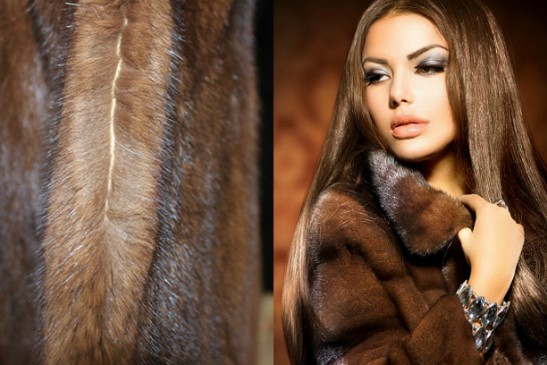 Most often, as a result of improper storage of a fur coat, creases appear.
Most often, as a result of improper storage of a fur coat, creases appear.
No one is immune from mistakes, including those related to the storage of fur products. Of course, one of the irreparable damage is bald spots from moths or the ingress of chemicals - no tricks will return the fur coat to its former charm. But there are also such troubles that can be defeated.
Creases
It is impossible to store a fur coat folded - this is an axiom. But if you did not know this, but having taken out your favorite thing, you saw a lot of creases, then you can take some measures:
- We collect hot water in the bath.
- We bring a fur coat on a hanger into the bathroom and close the door tightly.
- We wait until the creases straighten.
- We dry the thing and hang it in the closet only on a hanger.
The second method is suitable if there are few creases and they are not very serious:
- We moisten the sponge with water.
- We iron the pile "along the wool" with it.
- We comb the fur coat.
- We dry the product.
Deformation of the flesh
With increased dryness of the air, the treated skin dries out, and with too high humidity, it stretches. In the latter case, to normalize the flesh, it is enough to set comfortable moisture indicators. But the rigidity will have to be fought with slightly different means:
- We mix 1 liter of water, 1.5 tbsp. l. table salt and 1 tbsp. l table vinegar.
- Using a sponge, apply the composition to the wrong side of the product.
- Knead the skin with your hands and rinse with clean water.
- Dry naturally.
You can also use an alternative method:
- Mix ½ cup of water and ½ cup of liquid soap.
- Add 50 ml of any fat and 1 tbsp. l. glycerin.
- We wipe the skin with the resulting composition.
- Rinse off and sprinkle the skin with chalk to remove the remaining fat.
Loss of gloss
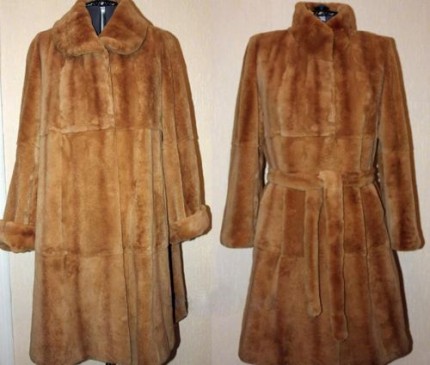 You can return the fur to its former shine at home.
You can return the fur to its former shine at home.
The enemy of the brilliant shimmer of fur is sunlight. When it gets on the cover in which the fur coat is stored, the product becomes dull. But you can try to return things to their former beauty with the help of vinegar and alcohol:
- Wet a piece of cotton wool or cotton cloth with a 9% vinegar solution.
- Wipe dull areas.
- We moisten a cotton pad with alcohol, wipe damp places.
- We comb the pile and dry it in the open air.
Yes, it is pleasant to wear a fur coat. But it also requires a lot of care. But with proper care, your warm girlfriend will last a long time. And its appearance will be so bright and fresh that no one will even admit that your fur coat is more than one year old. Here it is for sure: the end justifies the means.
Choosing a cover
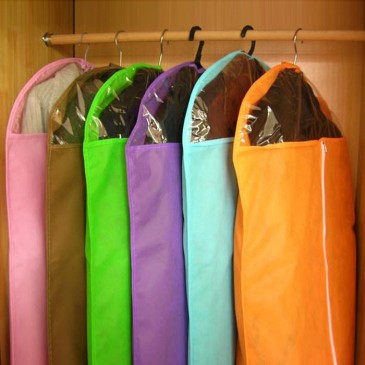 Fur should be stored in colored covers made of natural fabric
Fur should be stored in colored covers made of natural fabric
Under no circumstances should a fur coat made of natural fur be stored without a cover. Otherwise, the product will fade, be remembered and lose its luxurious look forever. The cover must be fabric. Vacuum bags for storing fur products are contraindicated. The fact is that, firstly, the fur coat will have to be folded, since it is almost impossible to find a cover of a suitable size. And secondly, condensation forms in a closed bag, which negatively affects the villi and flesh - the treated skin, the basis for fur. So what are the requirements for a fabric cover?
- It must be breathable and made of natural fabric (linen, cotton, canvas).
- The width of the bag should be slightly larger than the width of the fur coat.
- The length should be 10-15 cm longer than the fur garment.
- The insert on the cover should be located on the side - this is the only way to squeeze the fur coat, and it will be much more convenient to pack it.
- It is better if the cover has a transparent "window" - when storing several fur items in one cabinet, it will be more convenient for you to figure out where which one.
- The sun's rays should not fall on this transparent insert, since ultraviolet light negatively affects the fur even through polyethylene.
- The color of the cover should repel sunlight, so saturated blue, dark brown, black are preferable (so that the paint does not pass onto the fur coat, when buying a packaging bag, swipe with a damp cloth on the inside - if there are no traces left, you can buy).
- Before placing the coat in the cover, treat it with an anti-moth spray, and then repeat the treatment every 3 months.
General rules
How to store a fur coat in the summer so that it does not lose its original shape, shine and rich color of the fur? For this, the mink needs to create certain conditions:
Ambient temperature + 2 + 4 ° С.
Mink fur, like any other, loves cool air. The optimum temperature helps to maintain the elasticity of the pile and prevents the appearance of moths and skin beetles, the larvae of which can cause irreparable damage to the coat. At home, such a temperature is difficult to create, so during the summer you need to take out the fur coat several times and hang it in a well-ventilated room or on cool days outside.
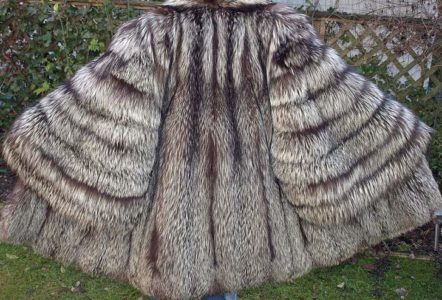
We recommend that you familiarize yourself
In large cities there are firms that provide services for storing fur products in special fur-coat refrigerators, but for most of the owners of mink clothes, this service is not yet available.
Air humidity 45-65%.
Dry air has a bad effect on the condition of the flesh (the inside of the finished skin) - it makes the flesh brittle. Humidity 45-65% will prevent the leather from drying out. Usually in city apartments the air humidity does not exceed 25-30%. To provide "comfortable" conditions for your favorite fur coat, it is worth purchasing an air humidifier, which will create a good climate not only for the fur product, but also for the health of the household.
Lack of sunlight.
You need to store a mink coat in a closet or dressing room, where there are no light sources. Moreover, the sun's rays should not get there - from their influence the dark fur "burns out", loses its color saturation and shine, and the light mink acquires an ugly yellow tint. Light bulbs have the same effect on fur. If lamps are mounted in the storage for a fur coat, the product must be in an opaque case.
Free space.
The distance between the fur coat and other things should be at least 20 cm. Free space is necessary so that the fur does not wrinkle or wrinkle. In addition, the air must circulate around the fur coat, thereby maintaining the necessary humidity.
Hanger.
During storage, the fur coat should hang on a hanger with hangers equal in length to the shoulders of the product. If the manufacturer did not provide a suitable hanger with the fur coat, then you should choose a wooden one with wide rounded shoulders. The base, which is the same size as the shoulder part of the fur garment, will avoid deformation of the product.
In the summer, a mink fur coat should be stored in compliance with the specified parameters, only in this way it will not lose its attractive appearance until the next season.
Product price
It was said above that a mink fur coat is an expensive product. The price for it can vary and depends on who is its manufacturer, what kind of fur was used and on other parameters.
The cost of a short fur coat from the fur of this animal starts from a thousand dollars. Prices for models from the premium segment, such as Black Nafa or Black Glam, can go up to 50 thousand or more. Of course, they are not designed for the mass consumer. Appropriate care is also needed for such expensive products.
Who wears mink coats?
This fur product can be safely called universal. They are short, long, with or without a hood, as well as in other modifications. It is worn mainly by the fair sex of all ages.By the way, some men are also not averse to having this product in their wardrobe. They not only emphasize their own respectability, but also warm in the cold winter, which, in our country, are not uncommon.
Storage preparation
There are owners of fur products who simply place the product in the closet, completely forgetting that this should never be done. The mink does not tolerate neglect of herself.
Due to unfavorable conditions, which are represented by poor ventilation, high air humidity and others, the fur may turn yellow or begin to fall out.
After a couple of seasons of storage, it will be possible to find large bald spots on the surface of the fur product. As a result, the fur coat can no longer be worn, since external defects will catch the eye of others. The owner of a fur product will cease to be a queen, but will look like a circus worker who left the arena a few minutes ago, forgetting to take off her costume.
Storage preparation includes the following steps:
- Purchase a special cover for a fur coat. It can be bought both in the store where the fur product was bought, and at another point of sale. It is desirable that it comes complete with a zipper. In this case, the wardrobe item is not difficult to hang and take off. The plastic cover must not be completely sealed. After all, then the fur will not be able to "breathe";
- After the second season of use, you should inspect the fur product from all sides. As a rule, it is by this time that the fastening of the buttons deteriorates, and the lining may also break. If this happened, then repair it yourself, or take it to the studio. These defects are not warranted, which means that there is no point in making a claim to the store;
- Removal of contamination. With intensive wearing of a long fur coat, they appear. Do not try to remove it yourself, using newfangled means or means obtained by folk methods. You can simply irrevocably "burn" the fur. Go straight to the dry cleaning. Special technologies and chemistry will return the fur to its former shine. There will be no trace of stains. In general, it is considered good form to visit dry cleaning about once a season. It should not be any longer, as the strength of the fur is deteriorating;
- Combing fur. This is a mandatory procedure. If you neglect it, then next season you will be able to see a not very pleasant picture. The pile will be directed in different directions, and in some places even crumpled. Comb the fur in the direction of the coat. It is best to use a metal comb with sparse teeth for this;
- Airing a fur product. If there is a yard, then hang a fur coat in it for several hours. Make sure that the product is not accessible to pets and the smallest family members. They are extremely curious, and expensive fur can easily fall into their field of vision;
- Check pockets. Nothing should remain in them. This is usually money or cosmetics. You should put moth tablets in your pockets. It will be a shame if the insect spoils the most important product in the wardrobe;
- We place it on a hanger. In general, it can be wooden or metal. If there are folds, then get rid of them. Fasten all buttons and hooks. The only thing left to do is to put the fur coat in a case and find a place to store it.
Where to hang a fur coat?
Answering the question how store a mink coat, it should be said about the best places for placing products and furs. In general, you can store it anywhere, but the place should meet simple requirements. The first step is to exclude the influence of ultraviolet rays. They negatively affect the quality of the fur. If the temperature is high, then this can lead to thinning of the pile and the disappearance of splendor.
The best storage space is in an ordinary closet. But, make sure that other things do not put much pressure on the fur coat. Otherwise, the fur will be crumpled.Attics and basements are places where a fur item shouldn't even appear.

How to store a fur coat: simple secrets
Preparation of a fur product
If you are looking for a way to properly store a mink coat at home, then initially you need to devote time to properly preparing the product.
Thoroughly clean the product from dust and dirt. To do this, shake it vigorously several times, and then walk with a special brush both on the outside and on the inside.
If the mink surface needs to be cleaned of grease, use the available means for this: talcum powder, starch or flour. They are good absorbents and quickly absorb excess fat.
It will be enough to apply the free-flowing agent for half an hour, then shake it off or sweep it off with a soft brush. To prevent contamination, dry-clean your mink garments at least once a year.
After cleaning the fur, the mink thing must be well ventilated and dried. To do this, hang the fur coat on a hanger and leave it for several days in a dark, cool room with good air circulation. It is better to choose a hanger of wood, suitable in size, so that the sleeves do not deform during storage.
Finally, close the buttons and pockets, remove the accessories and place the mink garment in the case.
Choosing a good case
Often the owners are faced with the question of which case to keep the mink coat in.
First of all, when choosing, you should pay attention to the material, it must pass air well. Cotton and linen cases cope with this: they create an air gap around the fur coat and preserve the fur qualities
Summer storage
When the cold season ends, you need to decide how to store a mink fur coat at home in the summer. First you need to choose the right storage location. A spacious wardrobe or dressing room is suitable for this.
To avoid creases and abrasions of the fur, the product should not come into contact with other things. Then take care of the correct temperature regime in the room: the air should be cool (the best option is from 0 to + 10 ° C), and the humidity should be within 45%.
If you do not dare to keep a fur coat at home, place it in a special freezer, where the required temperature is maintained and other rules for storing mink products are observed. Many dry cleaners offer this service in the summer. When asked whether it is possible to store a fur coat in a home freezer, the answer is no; a food freezer is not suitable for this purpose.
Storage of mink fur products in winter
There are several rules for caring for fur in winter. First, it is necessary to dry the mink coat well after each wear, since high humidity has a negative effect on the condition of the fur. Do this at room temperature, away from heaters and batteries.
Secondly, the mink product must "breathe". If, due to weather conditions, it is not possible to go outside, you can hang it on the balcony; in winter, choose clear frosty days for this. In no case should a mink thing be permanently stored on the balcony: it will damp and lose its attractive appearance.
Case or vacuum bag?
A fur coat is needed in any case. It is not recommended to store either a separate product without a cover, much less furs of different colors: the coloring material from one of them can be imprinted on the other.
The safety of a fur coat depends not only on temperature conditions and humidity, but also on the quality of the cover in which it is placed. When choosing it, you need to take into account a number of nuances:
The width of the cover should not be less than the width of the product
Also pay attention to the length. It should be 10-15 cm larger than the size of the fur coat
This is to prevent the clothes from wrinkling.
Choose covers with a side gusset. This will prevent the fur coat from being squeezed.The zipper connector should run from the tremper to the very bottom, since it will be more convenient to place the fur coat inside, and you will avoid its deformation.
When storing several fur coats, it is convenient to purchase covers with a transparent insert. So you will have an idea of the location of the products without taking them out. But you must not allow the sun's rays to hit this insert.
For a fur coat, only a cover made of natural material is suitable: linen, cotton or canvas. These fabrics will help provide airflow to the garment.
It is better to choose a cover in black, brown or dark blue, since they do not transmit ultraviolet light well. But you must make sure that the paint does not transfer to the fur coat. To do this, you need a regular wet wipe. Swipe over the cover, and if you don't find traces of paint on it, feel free to buy the product.
The cover, unfortunately, does not protect the fur from moths. Therefore, it is advisable to treat the material with a special spray or aerosol. For example, Mosquitall, Tornado or Raptor. Such impregnation must be renewed every 3 months, as it loses its properties.
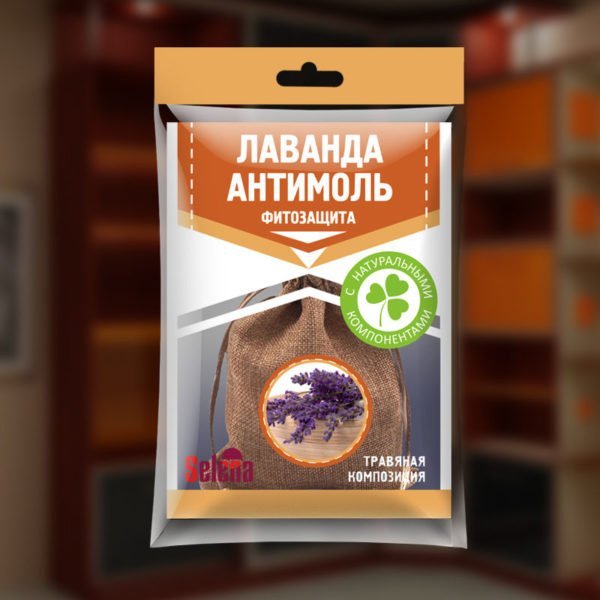
Do not forget to put a moth repellent in the closet or spray the fur coat cover with a spray
You can put pieces of cedar bark in your pockets: the moth does not tolerate this aroma, and, accordingly, will not encroach on a fur coat. In addition, its smell does not fade away. Dry geranium, lavender or citrus peels are also suitable for this purpose. But folk remedies are inferior in effectiveness to aerosols and sprays. Do not use naphthalene. It repels moths well, but it is a carcinogen, and therefore, in many countries, its use has been banned for several years.
The subtleties of storing different furs
How to store a mink coat in the summer at home?
Mink is a capricious fur. The best storage option is a cedar cabinet. Since this tree does not allow moisture to pass through and repels moths with its specific smell.
It is necessary to take into account the following nuances:
- The cover for storing the mink coat must be breathable. Plastic cloth will not work.
- A cheap cover can get stained, so you need to purchase a quality product.
- Spray may leave stains. To avoid them, you need to make protective bags with your own hands. Each bag should contain lavender, dry geranium, etc.
- Fur needs free space.
How to store a mink coat in the summer at home? It must be ventilated every 4 months. Protective moth pouches need to be changed.
Unlike mink:
- Mouton is the most durable. Such a fur coat is ideal for everyday wear. It must be stored in a ventilated cabinet. Mouton has one feature - if you do not immediately remove the dirt or stain, then afterwards it will be almost impossible to remove it. The fur coat must be thoroughly and immediately cleaned before storage. Mouton's main enemy is heat. The optimum temperature indicator is 8-12 ° C. Otherwise, the fur will lose its luster and take on a musty smell. In order to avoid deformation of the muton coat, you need to select the hanger exactly the same as the width of the product's shoulders.
- Nutria, beaver are the most wear-resistant furs. Such fur coats will last more than one year, while maintaining their original appearance. However, there are some nuances in storing these two furs:
- A beaver fur coat should be stored in a cool and dry place. Dampness and warmth are enemies that make a fur coat faded.
- Nutria fur is stable, the main rule of care is to protect it from moths.
- Rabbit fur must be stored like a mink.
- Fur of a raccoon, fox, chinchilla easily lends itself to various creases. Products should only be stored on a hanger. In this case, the fur coat should be "comfortable" and free in space.
- A goat fur coat must be hung on wide shoulders in order to maintain its shape.
The storage conditions for different furs are almost identical.

